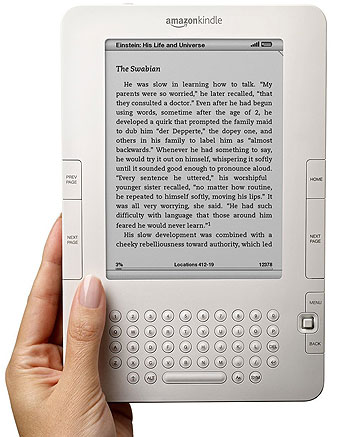The future of reading as we know it today is at the verge of extinction. As more and more content is made available in digital form, physical media (books, magazines, newspapers) are slowly taking the back seat.


The future of reading as we know it today is at the verge of extinction. As more and more content is made available in digital form, physical media (books, magazines, newspapers) are slowly taking the back seat.
Modern smart phones and tablets can carry thousands of books in your pocket which you can read at the coffee shop, in the lounge while waiting for a meeting or on the commuter taxi after a hard day’s work.
Digital formats
Currently, the available formats include epub, PDFs, HTML most of which are compatible with most tablets and smart phones.
Readers
E-book readers come in hardware and software formats. Hardware readers basically include, computers, tablets, smart phones and dedicated e-readers. Some of the popular readers include Amazon Kindle, Kindle Fire, Kobo reader, Barnes and Noble nook reader and the Nook tablet. The Kindle Fire from Amazon is a full-on android tablet though it was purpose built for consumption of Amazon content (books, magazines, videos, movies and music)
Software readers on the other hand are basically apps that run on Apple iphones/ipads and android phones/tablets. Some e-reader apps run on computers. Some of the reader apps include bookshelf on Apple platform, Kobo reader (compatible with apple and android), Amazon Kindle (Apple and Android compatible), Zinio reader (compatible with windows, Mac, iphone/ipad and android), and Aldiko reader for android and ipad/iphone.
Smart phones
Though smart phones are not ideal for reading rich publications e.g magazines, newspapers, they work just fine for reading e-books. E-books are formatted for big screens (tablets) and small screens on smart phones. Magazines on the other hand need a lot of zooming and scrolling.
The major players on the digital space
Amazon
By far the biggest online retailer. They have the most comprehensive collection of books and magazines and newspaper s, both in print and digital form. Amazon kindle devices are connected to Amazon’s e-book store allowing you to buy, and read your books at your convenience.
Project Gutenberg
Pay very close attention to this website if you love books. Project Gutenberg is a non-profit organisation which digitizes and distributes books free of charge through their website. They have thousands of classic and out-of-print books available for free download. Their books are in PDF, HTML and epub formats, which are compatible with computers, smart phones and tablets.
Apple
Apple’s bookshelf allows you to buy books, and magazine subscriptions through your iphone or ipad. The ipad’s 9.7 inch screen is perfect for reading magazines and PDF documents.
Zinio (www.zinio.com)
Zinio is a cross-platform service. Basically, once registered through their website, you can buy, download or read your books/magazines on a computer, smart phones or tablets. The Zinio reader (free download) can be installed on windows/mac computers, iphone, ipad and all android phones and tablets. Once logged into your account, you have your entire library of purchased items at your finger tips including books and magazine subscriptions. You can access your content on your smart phone or tablet as well. As an incentive, zinio offers new members up to 10 free magazines.
Barnes and Noble
Similar to Amazon though they have their own reading devices such as the Nook reader, nook colour and Nook tablet.
Google Books
Google books has millions of digitized books which can be accessed through the internet on a tablet or smart phone.


